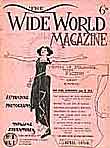Men's magazines: an A to Z
Men's magazines, lads magazines, glamour magazines, pin-up magazines and top-shelf magazines covered alphabetically. This page addresses T3to Zoo Weekly via Town, Tit-Bits and Viz. On other pages:Introduction
- 3D titles to Boys Toys
- Carnival to Cut
- Deluxe to Esquire
- Fable to Front
- The Gentleman's Magazine to The Humorist
- Ice to London Opinion
- Man to Maxim
- Mayfair to Monkey
- Nine to Playboy
- Razzle to Stuff
- T3 to Zoo Weekly (this page)
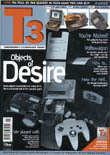 T3:
men's magazine about gadgets |
T3 Future, November 1996- |
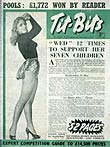 Tit-Bits
from December 3 1955 in a tabloid newspaper format when it
was at a peak, selling about 1.2m copies a week 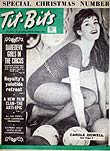 Tit-Bits from December 16 1961. The style of cover had hardly changed, though the paper quality was better and printing had shifted to Sun Printers in Watford 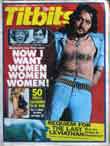 Titbits – note the subtle name change – from 13 January 1973. By this stage it had adopted colour covers and looked more like a magazine than a newspaper 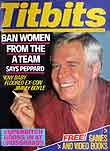 Titbits from May 1984. This issue carried an advert for Parade – with raunchy nudes, local girls and readers' wives |
Tit-Bits/Titbits [closed] George Newnes/IPC. October 1881-1984 It was the first popular paper to sell 1m copies a week and its circulation peaked in 1955 at 1,150,000.* Contributors included Alfred Harmsworth (later Lord Northcliffe) and Winston Churchill. Titbits ran a contest in the first world war for a song that could be sung by soldiers at the front: Ivor Novello won it with 'Keep the Home Fires Burning.' Tit-Bits spawned many imitators, including Harmsworth's Answers. It specialised in 'human interest' snippets with short stories and full-length serials by authors such as Rider Haggard. Pin-ups appeared on its covers from 1939.
Titbits was taken over by Associated Newspapers' Weekend on 18 July 1984 with sales of 170,000 copies. The last editor was Paul Hopkins. Its main competitors were not other magazines but popular daily papers such as the Sun. Ron Chilton, chief executive of IPC Magazines, said the popular tabloids were 'just daily Titbits with a bit of news added on to the front'. In reporting the closure, the Financial Times* described Titbits as 'the 103-year-old progenitor of Britain's popular press'. It went on:
The FT also reported: 'Chilton made it clear that Titbits would never again come out as a separate publication. Apart from anything else, IPC would not wish the old logo to fall in to the hands of pornographers.' However, Titbits was later sold to Sport Newspapers, which then sold it on. The name lives on as a glossy adult monthly Titbits International. *Cameron, S., Fishlock, D. and Cottrell, R. (1984) 'The inevitable
death of Titbits,' Financial Times, |
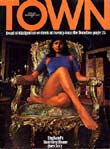 Town,
the quintessential men's magazine of the 1960s |
Town [closed] Cornmarket/ Haymarket -1968 |
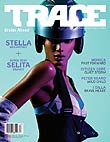 Trace,
was originally launched in London as True
|
Trace (was True) True Inc., New York, 1995- (as True in London) |
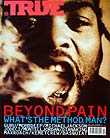 True
grew out of a protest about a lack of hip-hop coverage in The
Face |
True [now Trace] True Magazine Ltd, Jul/Aug 1995 |
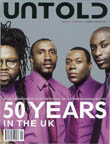 Untold
magazine for black men |
Untold [closed] Untold Magazine, London.June/July 1998-? |
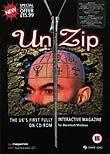 Unzip
CD-Rom magazine |
Unzip CD-Rom [closed]IPC/Zone, 1995-? |
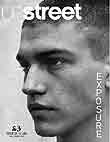 Upstreet
in November 2006, the 18th issue |
UpstreetWestmag Ltd/Upstreet Artwall Ltd, London. July 2001- |
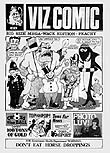 Viz
fifth issue 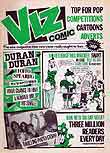 Viz
in May 1983 on its way to selling a million Viz
in May 1983 on its way to selling a million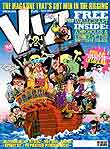 IFG introduced colour to Viz covers |
Viz ComicChris Donald/House of Viz/John Brown/IFG/Dennis, 1979- The fortnightly was bought by contract publisher John Brown. Distribution
expanded when it was bought up as John Brown Publishing's first
news-stand title. In 1989, sales peaked at a million before falling
to about 200,000 by 2002. The magazine was sold to IFG – run by
Loaded founder James Brown who had acknowledged Viz
as an inspiration for the lad's mag concept. IFG improved the
paper quality and repositioned the title alongside men's lifestyle
magazines, rather than on the top shelf, where it had sat in most
newsagents. It began to attract substantial advertising, such as
for vodka. In 2001 IFG folded and sold the title to Dennis. Still
produced by cartoonists in Newcastle |
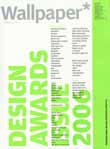 Wallpaper
design awards special with four vertical layers on cover
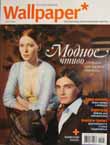 IPC licensed Wallpaper to Axel Springer Russia in 2005 |
WallpaperWallpaper Group/Time Inc/IPC Media, September/October 96- |
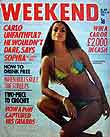 |
Weekend [closed]Northcliffe House, London EC4. – 1989? |
First issue of Wide World in 1898 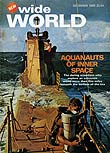 Final issue of Wide World in 1965 |
Wide World [closed]George Newnes Ltd, Tower House, Southampton Street, WC2. 1898-December 1965
|
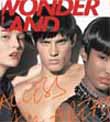 Wonderland:
a luxury men's magazine focusing on contemporary visual culture
|
Wonderland Visual Talent, London. Sept/Oct 2005- |
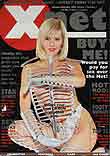 X-Net
caused a stir with its CD-Rom full of links to adult websites
|
X-Net [closed] Instant Access Ltd, London. Jan/Feb 1997 |
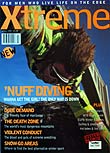 Xtreme
was for ‘men who live on the edge' |
Xtreme [closed]Xtreme Publications. April 1997-? |
ZM [closed]National Magazines, Autumn/Winter 1998-? |
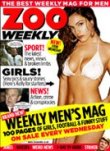 Zoo
went head-to-head with Nuts to gain leadership in the weekly
men's magazine market |
Zoo WeeklyEmap, 24 January 2004-2015 |




